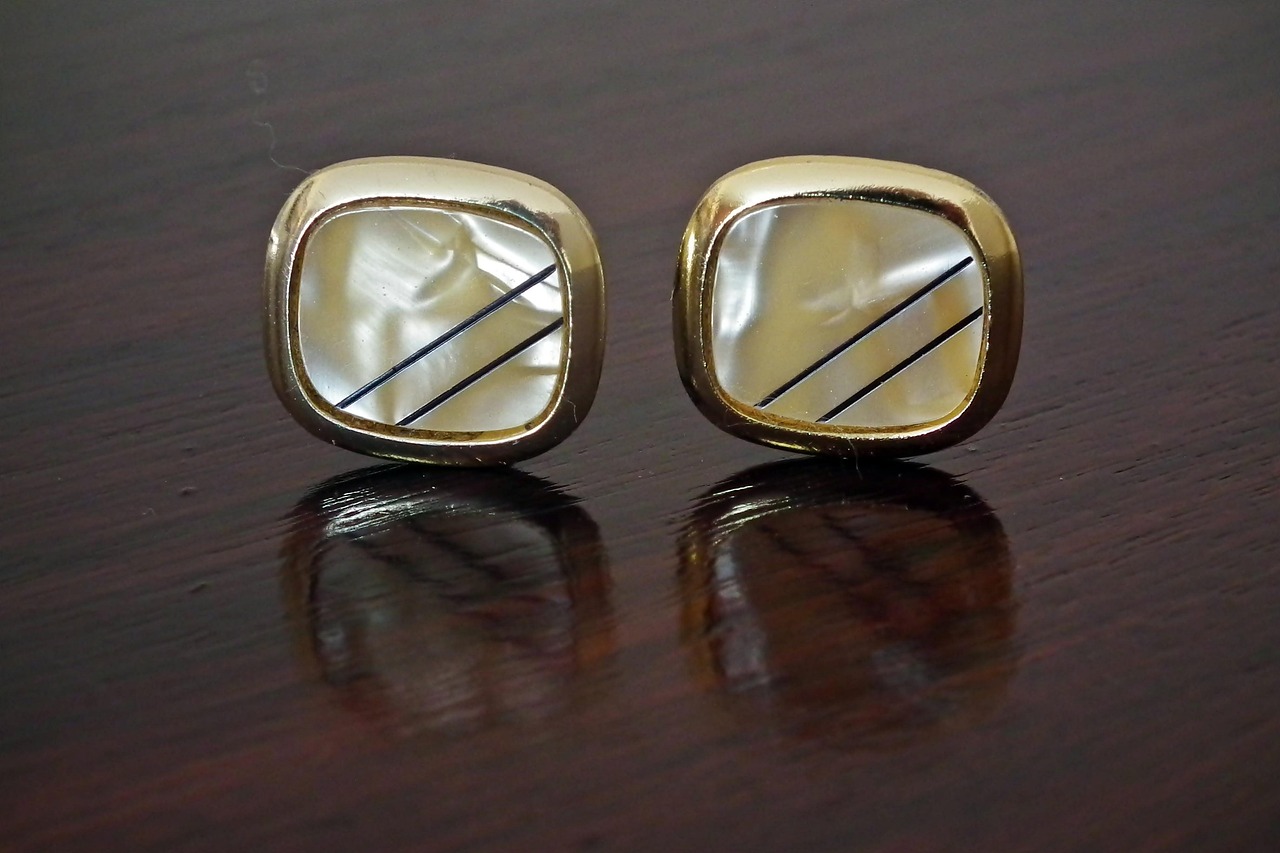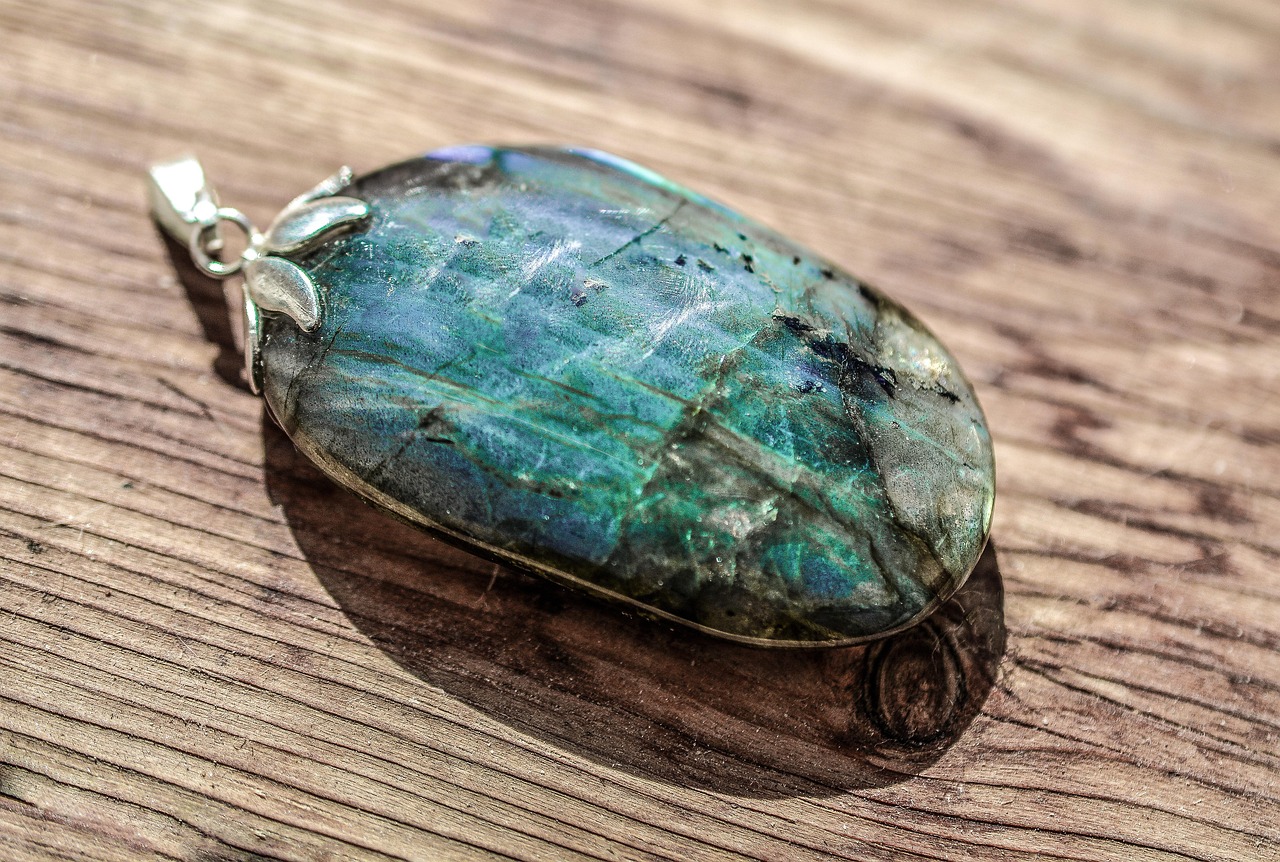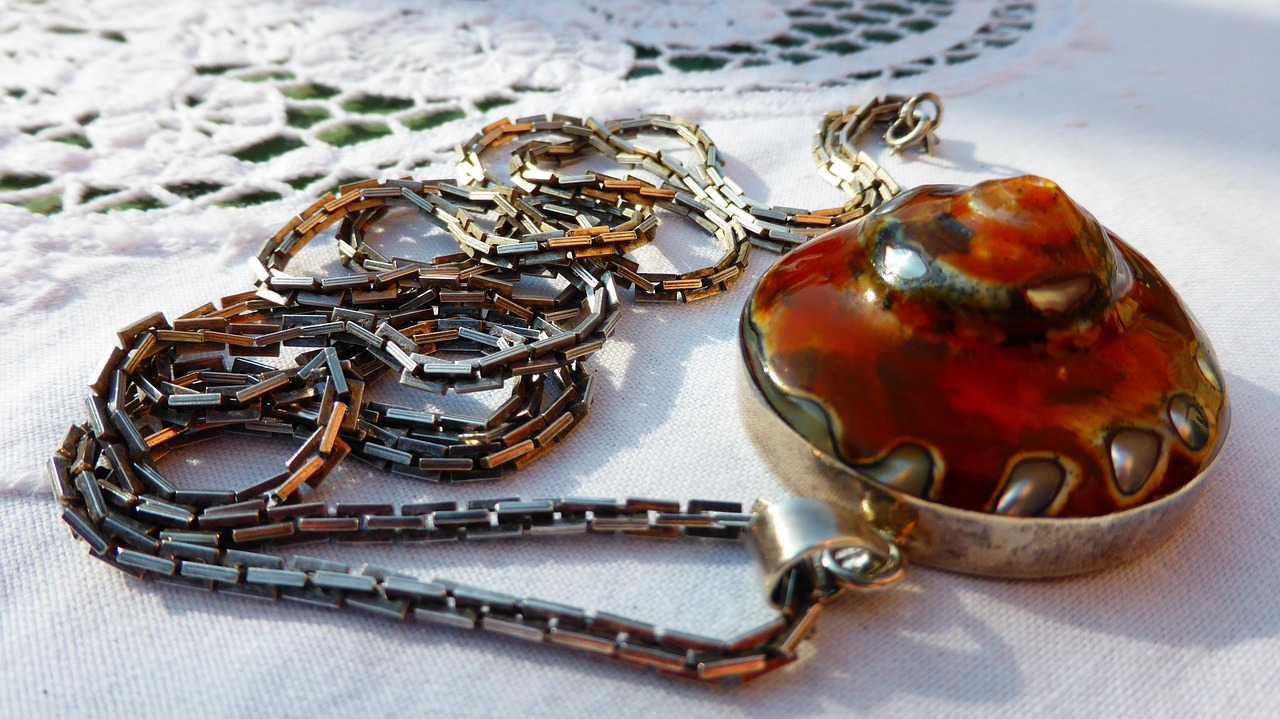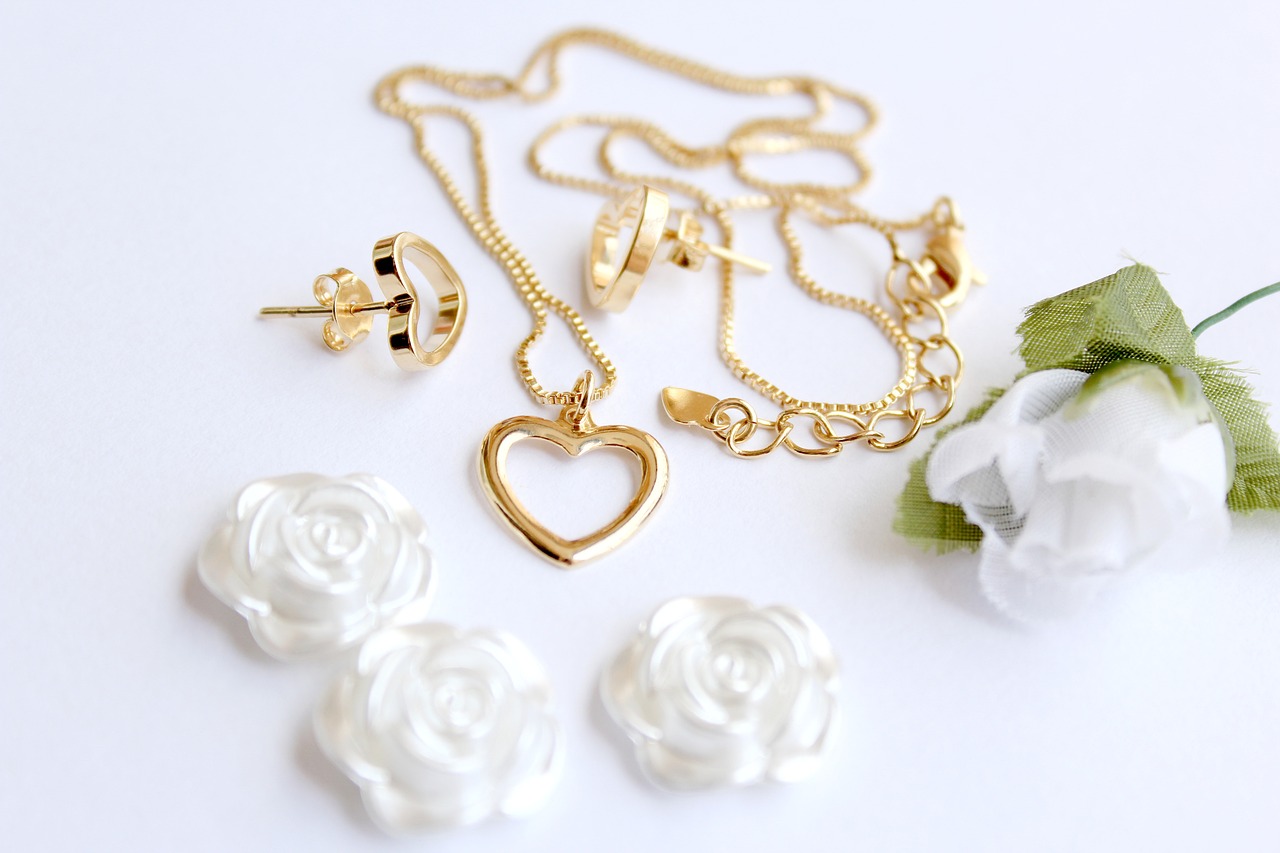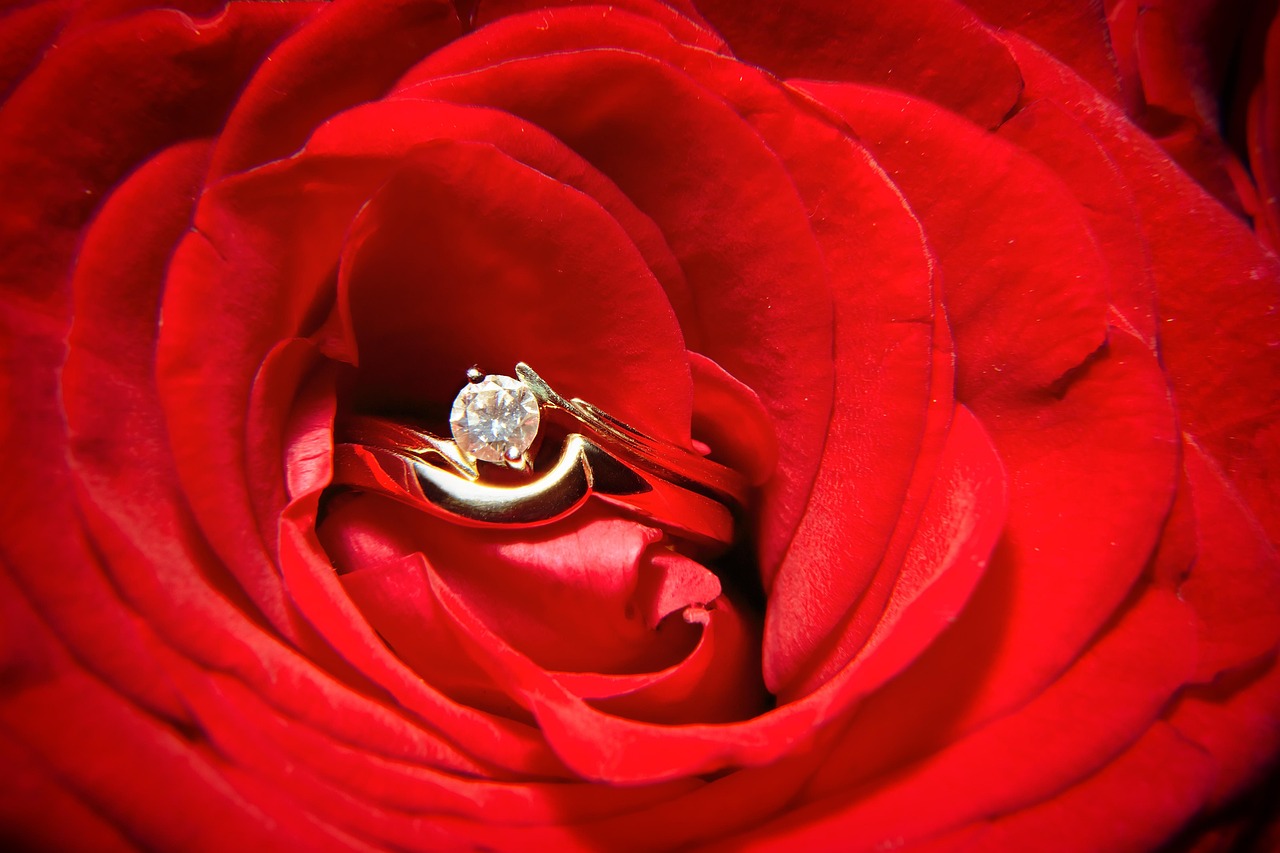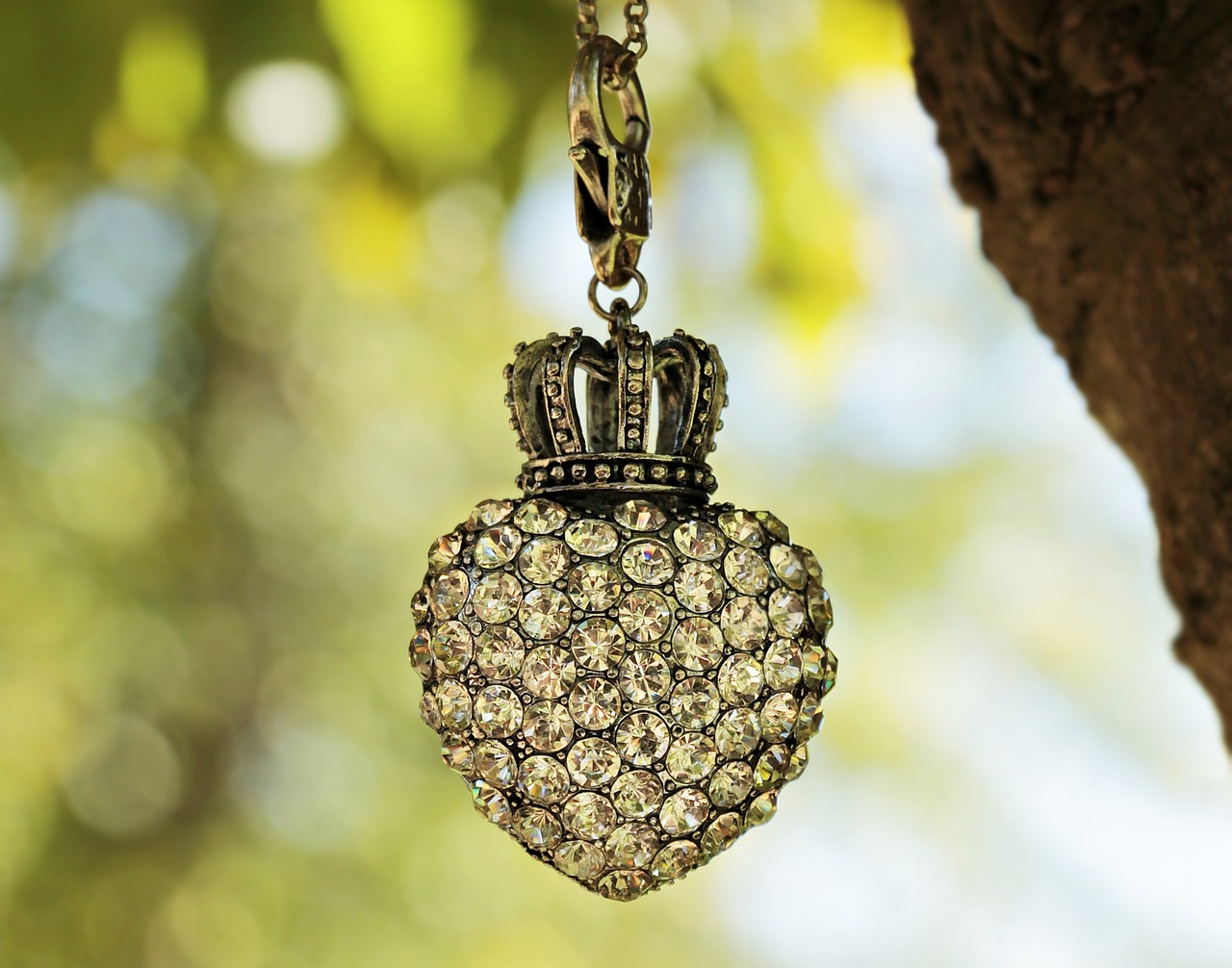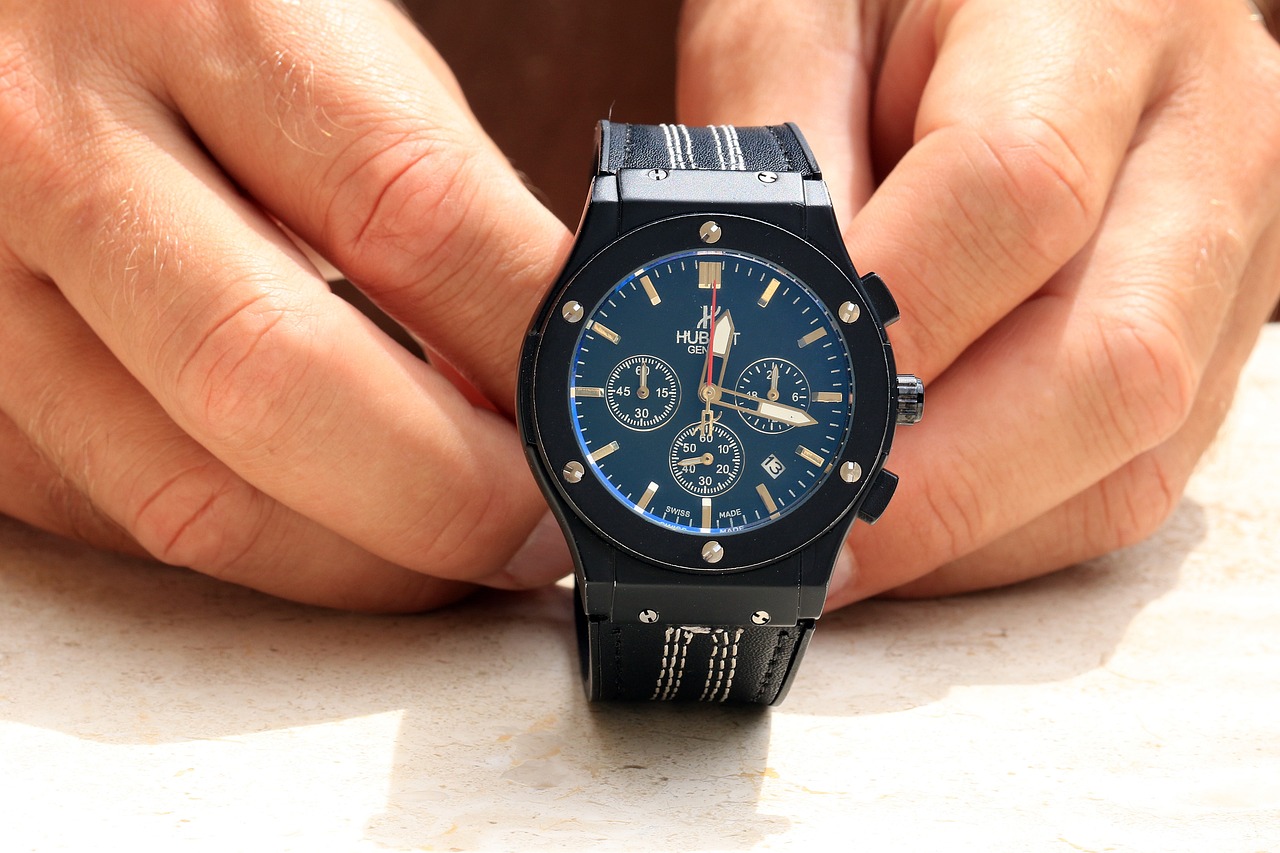This article explores the intersection of artificial intelligence and jewelry design, examining whether technology can truly replicate the artistry of skilled artisans while considering the impact on craftsmanship and creativity.
What is AI-Designed Jewelry?
AI-designed jewelry refers to pieces created using algorithms and machine learning, allowing for innovative designs that challenge traditional craftsmanship. This technology is revolutionizing the jewelry industry by enabling designers to explore new forms and styles that were previously unimaginable.
How Does AI Influence Jewelry Design?
AI influences jewelry design through generative algorithms that analyze trends and consumer preferences. This capability allows for the creation of unique pieces tailored to individual tastes. By leveraging data, designers can push the boundaries of creativity, resulting in pieces that resonate with modern aesthetics.
The Role of Algorithms in Design
Algorithms play a crucial role in AI-designed jewelry by generating patterns and styles based on extensive data analysis. These algorithms can evaluate existing designs and customer feedback, leading to choices that reflect current market trends. The impact of these algorithms on design choices is profound, as they offer insights that human designers may overlook.
Data-Driven Design Choices
Data-driven design choices allow AI to understand consumer preferences, leading to personalized jewelry options. By analyzing purchasing behavior and social media trends, AI can suggest designs that are more likely to appeal to specific demographics. This enhances customer satisfaction and engagement with the brand.
Limitations of Algorithmic Creativity
Despite advancements, algorithmic creativity has limitations, particularly in emotional expression and cultural nuances. AI struggles to replicate the depth of human artistry, which often incorporates personal experiences and cultural significance. This aspect highlights the ongoing need for human artisans in the creative process.
Case Studies of AI in Jewelry
Several brands have successfully integrated AI into their design processes. For instance, companies like Gemvision and Jewelbots have utilized AI to streamline their design workflows, resulting in innovative pieces that blend technology with craftsmanship. These case studies showcase the effectiveness and potential of AI in jewelry creation.
Can AI Replace Traditional Artisans?
The question of whether AI can replace traditional artisans is complex. While AI offers efficiency and precision, it lacks the emotional depth that human artisans bring to their craft. This section analyzes the strengths and weaknesses of both AI and human artistry in jewelry making.
Advantages of AI in Jewelry Production
AI offers significant advantages such as efficiency, precision, and the ability to produce intricate designs at scale. These benefits can enhance the jewelry-making process, allowing for quicker turnaround times and reduced production costs. However, the question remains whether these advantages can truly replace the unique qualities of handcrafted jewelry.
The Unique Touch of Human Artisans
Human artisans bring emotional depth and cultural significance to their work, aspects that AI struggles to replicate. The unique touch of handcrafted jewelry is often imbued with stories and personal connections that resonate with consumers. This section emphasizes the irreplaceable qualities of handcrafted jewelry, underscoring the importance of human creativity in the industry.
The Future of AI and Jewelry Design
The future of AI in jewelry design is promising, with potential for collaboration between technology and artisans. Emerging trends suggest that a hybrid approach, combining AI’s capabilities with human creativity, could lead to groundbreaking designs that honor both tradition and innovation.
Collaborative Design Processes
Collaborative design processes that merge AI technology with human creativity are becoming more common. This synergy can lead to innovative designs that leverage the strengths of both AI and artisans. As the industry evolves, such collaborations may redefine the standards of jewelry design.
Ethical Considerations in AI Jewelry
As AI technology advances, ethical considerations regarding originality and ownership arise. Questions about intellectual property and the authenticity of AI-generated designs must be addressed to ensure a fair and sustainable future for both artisans and technology in the jewelry industry.
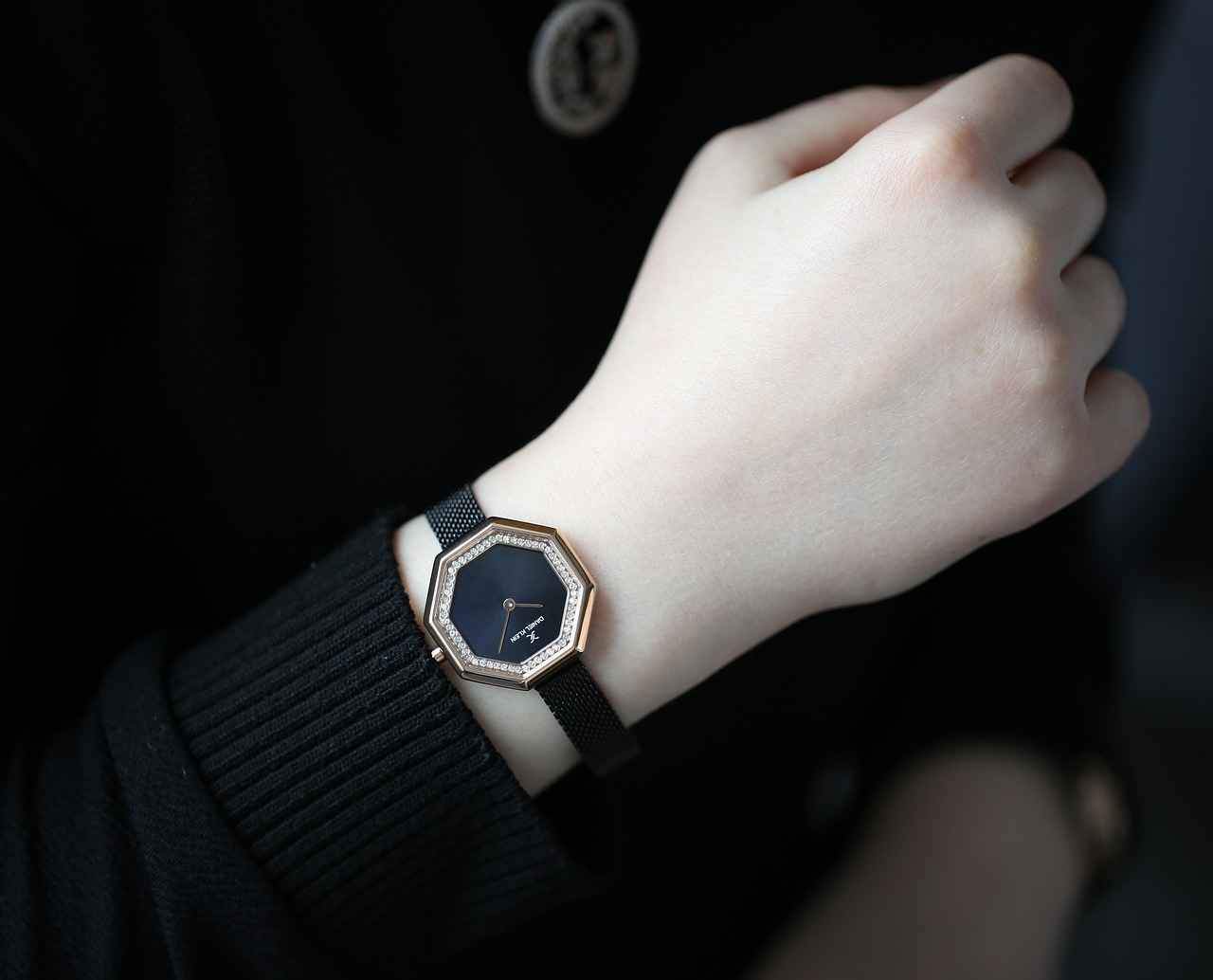
What is AI-Designed Jewelry?
AI-designed jewelry represents a groundbreaking fusion of technology and artistry, where algorithms and machine learning collaborate to create stunning pieces that push the boundaries of traditional craftsmanship. In this section, we will explore the essence of AI-designed jewelry, examining its definition, significance, and how it is transforming the jewelry industry.
At its core, AI-designed jewelry refers to jewelry pieces that are conceptualized and created using artificial intelligence tools. These tools utilize complex algorithms to analyze vast amounts of data, including current fashion trends, consumer preferences, and historical design elements. The result is a collection of unique, innovative designs that often challenge the conventional norms of jewelry making.
The integration of AI in jewelry design is not merely a trend; it is a revolution that is reshaping the industry. By leveraging the power of machine learning, designers can create pieces that are not only aesthetically pleasing but also tailored to individual tastes. This personalized approach enhances customer engagement and satisfaction, as consumers are increasingly drawn to unique, one-of-a-kind items.
The technologies behind AI-designed jewelry are diverse and sophisticated. Generative design algorithms, for instance, enable the creation of intricate patterns and shapes that may be difficult or impossible to achieve through traditional methods. These algorithms can simulate various materials and designs, offering a plethora of options for both designers and consumers.
While AI can produce remarkable designs, the question remains: can it replace the artistry of human artisans? The answer is nuanced. AI excels in efficiency and precision, allowing for rapid prototyping and production. However, the emotional depth and cultural significance infused in handcrafted jewelry by skilled artisans are qualities that AI struggles to replicate.
Despite its advantages, AI faces limitations in terms of creativity and emotional expression. While algorithms can generate designs based on data, they lack the ability to understand the nuances of human emotion and cultural context that often inspire art. This limitation raises important questions about the future role of AI in the creative process.
Several brands have embraced AI technology to enhance their design processes. For example, a prominent jewelry company utilized AI to analyze customer feedback and create a personalized collection that resonated with their target audience. This case study illustrates the potential of AI to not only streamline production but also to foster deeper connections with consumers.
The future of AI in jewelry design is bright, with potential for collaborative efforts between technology and human creativity. As designers and technologists work together, we can expect to see a new wave of innovative designs that blend the best of both worlds. This collaboration could lead to a more sustainable and inclusive jewelry industry, where unique designs are accessible to a broader audience.
As AI technology continues to evolve, ethical considerations regarding originality and ownership become increasingly important. Questions about intellectual property rights and the authenticity of AI-generated designs must be addressed to ensure a fair and equitable industry. Engaging in discussions about these issues will be crucial as we navigate the future of AI in jewelry design.
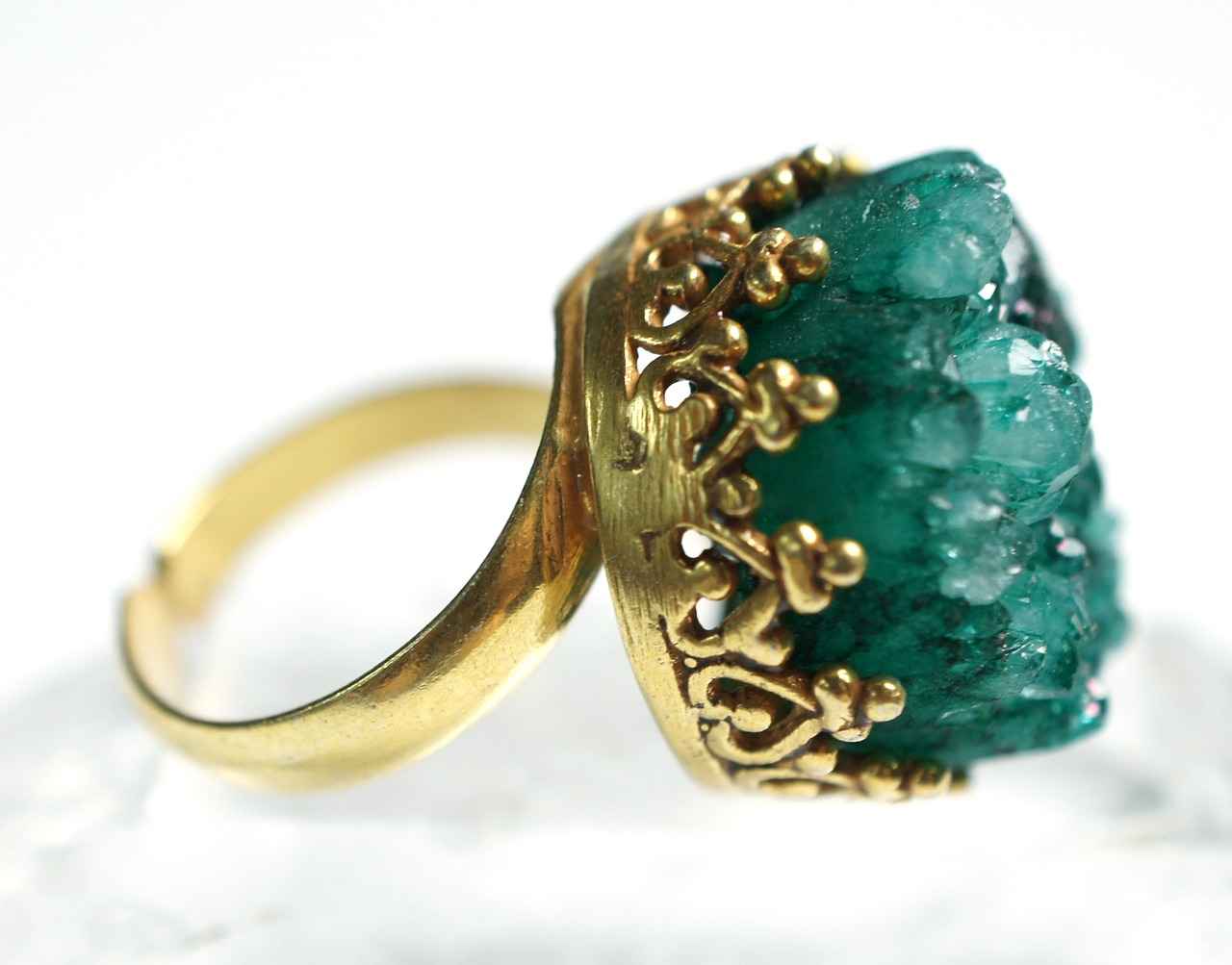
How Does AI Influence Jewelry Design?
The intersection of technology and creativity is a fascinating realm, particularly in the jewelry industry. Artificial Intelligence (AI) is increasingly becoming a game-changer, influencing various aspects of jewelry design. This section explores how AI utilizes generative algorithms to analyze consumer trends and preferences, ultimately leading to the creation of unique and personalized jewelry pieces.
AI’s impact on jewelry design is profound. By harnessing the power of data analysis and machine learning, designers can create pieces that not only reflect current trends but also cater to individual tastes. This technology allows for the generation of innovative designs that challenge traditional craftsmanship.
At the core of AI-designed jewelry are generative algorithms. These algorithms work by analyzing vast amounts of data, including past sales, social media trends, and consumer preferences. By processing this information, AI systems can generate unique design options that might not have been conceived by human designers alone.
One of the most significant benefits of AI in jewelry design is its ability to understand and predict consumer preferences. By utilizing machine learning, AI can identify patterns in purchasing behavior and aesthetic choices, leading to the creation of personalized jewelry that resonates with individual customers. This data-driven approach enhances customer satisfaction and engagement.
Algorithms play a crucial role in the design process. They generate patterns and styles based on the analyzed data, allowing designers to explore a myriad of possibilities. This section examines how these algorithms function:
- Pattern Generation: AI can create intricate patterns that are difficult for human artisans to replicate.
- Style Variation: Algorithms can produce multiple variations of a design, providing a wide array of options for consumers.
- Rapid Prototyping: AI enables quick iterations, allowing designers to refine their creations efficiently.
Despite its advantages, AI faces challenges in replicating the emotional depth and cultural significance that human artisans bring to jewelry making. While algorithms can generate visually appealing designs, they often lack the emotional resonance that comes from human experience. This limitation highlights the importance of human creativity in the jewelry-making process.
Several brands have successfully integrated AI into their design processes, showcasing its effectiveness and innovation:
- Gemvision: This company utilizes AI to help designers create custom pieces based on customer specifications.
- Jewelbots: A brand that combines technology with jewelry, creating pieces that connect with social media platforms.
- Brilliant Earth: They use AI to analyze consumer preferences, ensuring their designs are both trendy and sustainable.
The question of whether AI can replace traditional artisans is complex. While AI offers advantages such as efficiency and precision, it cannot replicate the unique touch and emotional depth that human artisans bring to their work. This section will further explore the strengths and weaknesses of both AI and human artistry in jewelry making.
The future of AI in jewelry design is promising, with potential for collaboration between technology and artisans. Emerging trends suggest that a synergy between AI and human creativity can lead to innovative designs that celebrate both precision and artistry.
As AI continues to evolve, its role in jewelry design will likely expand, offering exciting opportunities for both designers and consumers alike.
The Role of Algorithms in Design
In the evolving landscape of jewelry design, algorithms have emerged as a significant force, reshaping how pieces are conceptualized and created. This section delves into the intricate workings of these algorithms and their profound influence on design choices, ultimately questioning how technology can enhance or hinder the artistry involved in jewelry making.
At the core of AI-designed jewelry lies the ability of algorithms to analyze vast amounts of data. These algorithms are programmed to identify trends, preferences, and consumer behaviors by sifting through online interactions, sales data, and social media influences. This data-driven approach allows designers to generate unique patterns and styles that resonate with contemporary tastes.
How Do Algorithms Generate Unique Designs?
- Pattern Recognition: Algorithms utilize machine learning techniques to recognize patterns in existing jewelry designs. By assessing what has been popular in the past, they can predict and create designs that are likely to appeal to consumers.
- Customization: Algorithms can also facilitate personalization, allowing customers to input their preferences and receive tailored design suggestions. This level of customization enhances customer engagement and satisfaction.
- Speed and Efficiency: The speed at which algorithms can generate multiple design iterations far surpasses traditional methods. This efficiency not only saves time but also allows for rapid prototyping and testing of new ideas.
Impact on Design Choices
The integration of algorithms in jewelry design significantly influences the creative process. Designers can leverage the insights provided by these algorithms to make informed decisions about materials, shapes, and styles. For instance, if data indicates a rising interest in sustainable materials, designers can pivot their creations to incorporate eco-friendly options, aligning with consumer values.
However, while algorithms enhance the design process, they also raise questions about the authenticity of creativity. Can a design generated by an algorithm truly capture the emotional depth and cultural significance that human artisans infuse into their work? This dichotomy between algorithmic efficiency and human artistry forms the crux of the debate surrounding AI in jewelry design.
Limitations of Algorithmic Design
Despite their capabilities, algorithms do have limitations. They often lack the ability to understand cultural nuances and emotional expressions that are inherent in handcrafted jewelry. While algorithms can generate visually appealing designs, they may miss the subtleties that come from a deep understanding of cultural symbolism and personal stories. This raises an important question: Can technology truly replicate the emotional connection that handcrafted pieces offer?
As we explore the role of algorithms in jewelry design, it becomes evident that they serve as powerful tools that can enhance creativity and efficiency. However, the challenge remains in balancing these technological advancements with the irreplaceable qualities brought by human artisans. The future of jewelry design may well depend on how effectively these two worlds can coexist and complement each other.
Data-Driven Design Choices
have become a cornerstone of modern jewelry creation, particularly in the realm of artificial intelligence (AI). By leveraging vast amounts of data, AI systems can discern consumer preferences and trends, leading to highly personalized jewelry options that resonate with individual tastes. This section delves into the mechanisms through which data informs creative decisions, enhancing customer satisfaction and transforming the jewelry industry.
At the heart of this transformation is the ability of AI to analyze consumer behavior through data mining techniques. By examining purchasing patterns, social media interactions, and online reviews, AI algorithms can identify what styles, materials, and designs are favored by different demographics. This analysis enables jewelry brands to tailor their offerings, ensuring that each piece is not only aesthetically appealing but also aligned with consumer desires.
| Data Sources | Insights Gained |
|---|---|
| Social Media Trends | Popular styles and colors |
| Customer Reviews | Feedback on design and quality |
| Sales Data | High-demand products |
Moreover, AI’s ability to process this data in real-time means that jewelry designers can quickly adapt to changing trends. For instance, if a particular gemstone or design element suddenly gains popularity, brands can rapidly incorporate these elements into their upcoming collections. This agility not only keeps brands relevant but also enhances customer engagement by offering products that reflect current tastes.
Another significant aspect of data-driven design is its role in creating customized experiences for consumers. By utilizing AI-driven tools, customers can participate in the design process, selecting features that resonate with their personal style. For example, online platforms may offer virtual try-ons or customizable options that allow users to visualize how different designs will look on them. This interactive experience fosters a deeper connection between the consumer and the product, ultimately leading to higher satisfaction rates.
Furthermore, data-driven insights can help brands identify and target niche markets that may have been overlooked. For example, a jewelry company may discover through data analysis that there is a growing interest in sustainable materials among eco-conscious consumers. This information can guide the development of new lines that cater specifically to this demographic, thus expanding the brand’s reach and enhancing its reputation for innovation.
However, it is essential to recognize that while data-driven design choices significantly enhance the jewelry creation process, they also come with challenges. The reliance on algorithms raises questions about the authenticity of designs and whether they can truly capture the emotional depth that human artisans bring to their craft. While data can inform trends, it cannot replace the unique touch and cultural significance that handcrafted pieces embody.
In conclusion, data-driven design choices are revolutionizing the jewelry industry by enabling AI to understand consumer preferences and create personalized options. This approach not only enhances customer satisfaction but also allows brands to stay ahead of trends and cater to niche markets. As technology continues to evolve, the potential for further innovation in jewelry design remains vast, promising exciting developments for both consumers and artisans alike.
Limitations of Algorithmic Creativity
In the rapidly evolving landscape of AI-designed jewelry, the capabilities of artificial intelligence are often celebrated for their potential to innovate and streamline design processes. However, it is crucial to examine the that persist despite these advancements. This section delves into the intricate challenges AI faces in replicating the emotional depth and cultural nuances inherent in human artistry.
One of the most significant challenges for AI in the realm of jewelry design is its inability to convey emotional expression. While algorithms can generate visually appealing designs based on data analysis, they lack the capacity to infuse pieces with the personal stories or sentiments that human artisans often embed in their work. For instance, a handcrafted piece may symbolize a cherished memory or a cultural heritage, aspects that AI cannot inherently understand or replicate.
Cultural nuances play a pivotal role in artistic expression, particularly in jewelry design. Different cultures have unique symbols, materials, and techniques that hold significant meaning. AI, reliant on data and patterns, may overlook these subtleties, resulting in designs that, while innovative, may not resonate with the intended audience. For example, a piece inspired by traditional motifs may lack authenticity if created solely through algorithmic processes.
AI operates within the confines of its programming and the data it has been trained on, which presents inherent limitations. Unlike human artisans who can draw from a lifetime of experiences and emotions, AI lacks subjective interpretation. This absence of personal insight can lead to designs that, while technically proficient, may feel soulless or generic. The creative spark that comes from human intuition and inspiration is something that algorithms are currently unable to replicate.
- Generic Designs: Many AI-generated pieces can appear similar due to the reliance on existing data. This can lead to a lack of uniqueness in the jewelry market.
- Lack of Storytelling: AI cannot create narratives around pieces, which often enriches the value and appeal of handmade jewelry.
- Emotional Disconnect: Consumers often seek a connection to the artistry behind jewelry, which AI cannot provide.
While AI can enhance efficiency and precision in jewelry production, the human touch remains irreplaceable. Artisans bring their individuality and emotional depth to their creations, which resonates with consumers on a personal level. This connection is often what makes jewelry not just an accessory, but a treasured item.
The future may hold a more collaborative approach where AI assists artisans rather than replacing them. By leveraging technology, artisans can focus on the creative aspects of their work while allowing AI to handle repetitive tasks. This synergy could lead to a new era of jewelry design that honors both the craftsmanship of human artisans and the efficiency of AI technology.
In conclusion, while AI has made significant strides in the jewelry design industry, it still faces profound limitations in emotional expression and cultural understanding. The depth of human artistry, characterized by personal experiences and cultural significance, remains a cornerstone of the jewelry-making process that technology has yet to fully replicate.
Case Studies of AI in Jewelry
In recent years, the jewelry industry has witnessed a remarkable transformation with the integration of artificial intelligence (AI) into design processes. Several brands have embarked on this innovative journey, leveraging AI to enhance creativity, efficiency, and personalization in jewelry creation. This section delves into notable case studies that highlight the effectiveness and innovation of AI in the realm of jewelry design.
Brands across the globe are embracing AI technology to redefine their design processes. From analyzing consumer trends to generating unique patterns, AI is proving to be a game-changer in the industry.
- 1. Gemvision: This company has developed a software called MatrixGold, which utilizes AI algorithms to assist jewelers in creating intricate designs. By analyzing existing jewelry trends and customer preferences, the software enables designers to produce stunning pieces that resonate with modern aesthetics.
- 2. Stuller: Stuller has implemented AI-driven tools that streamline the design process. Their AI system can predict market trends and suggest styles that are likely to appeal to consumers, thus allowing jewelers to stay ahead of the curve while maintaining creativity.
- 3. Jewelbots: This innovative brand focuses on creating smart jewelry for young girls. Through the use of AI, Jewelbots can adapt their designs based on user interaction and preferences, making each piece unique and personalized.
- 4. Ai-Da: Ai-Da is a robot artist that has been programmed to create art, including jewelry designs. By using AI to mimic human creativity, Ai-Da produces pieces that challenge traditional notions of artistry and craftsmanship.
Integrating AI into jewelry design offers numerous benefits:
- Efficiency: AI can process vast amounts of data quickly, enabling designers to create prototypes in a fraction of the time it would take manually.
- Customization: With AI analyzing consumer preferences, brands can offer personalized jewelry options that cater to individual tastes.
- Innovation: AI encourages out-of-the-box thinking by generating unique designs that may not be conceived through traditional methods.
Despite its advantages, AI also faces challenges in the jewelry design process:
- Emotional Depth: AI lacks the emotional connection that human artisans bring to their creations, which can impact the perceived value of jewelry.
- Cultural Nuances: Jewelry often carries significant cultural meanings, which AI may not fully understand or replicate.
As brands continue to explore the integration of AI into their design processes, the jewelry industry stands at the forefront of a technological revolution. These case studies exemplify how AI is not merely a tool but a collaborator that can enhance the artistry of jewelry design while also addressing consumer needs. The future holds exciting possibilities as the synergy between AI and human creativity evolves, paving the way for a new era in jewelry making.

Can AI Replace Traditional Artisans?
The question of whether AI can replace traditional artisans is a multifaceted one, particularly in the realm of jewelry making. This section delves into the strengths and weaknesses of both artificial intelligence and human artistry, providing a comprehensive analysis of their respective roles in the industry.
AI technology brings several advantages to the jewelry design process:
- Efficiency: AI can generate multiple design options in a fraction of the time it takes a human artisan, allowing for rapid prototyping.
- Precision: Algorithms can achieve intricate patterns and details that might be challenging for human hands to replicate consistently.
- Data Analysis: AI can analyze vast amounts of data to identify trends and consumer preferences, leading to designs that resonate with the market.
Despite its strengths, AI has notable limitations:
- Lack of Emotional Depth: AI-generated designs often lack the emotional resonance and storytelling that human artisans imbue in their work.
- Cultural Nuances: Human artisans draw on cultural heritage and personal experiences, elements that AI struggles to incorporate authentically.
- Creativity Constraints: While AI can generate unique designs, it often operates within predefined parameters, limiting true innovation.
Human artisans excel in areas where AI falls short:
- Craftsmanship: The tactile experience of working with materials allows artisans to create pieces with unique textures and finishes.
- Personal Connection: Artisans often create jewelry that reflects personal stories or customer relationships, fostering a deeper connection with the piece.
- Adaptability: Human artisans can adapt their techniques and styles based on customer feedback or changing trends in ways that AI cannot.
Rather than viewing AI and human artisans as direct competitors, there is potential for collaboration:
- Enhanced Creativity: By combining AI’s data-driven insights with human creativity, designers can explore innovative concepts that might not emerge in isolation.
- Streamlined Production: AI can assist artisans in the production process, allowing them to focus more on the creative aspects of design.
- Customization: AI can help artisans offer personalized jewelry options by analyzing customer preferences, thereby enhancing customer satisfaction.
The future of jewelry design lies in the synergy between AI and traditional craftsmanship. As technology continues to evolve, it is likely that we will see:
- Innovative Techniques: New tools and methods will emerge, allowing artisans to push the boundaries of creativity.
- Ethical Considerations: As AI becomes more prevalent, discussions around originality and ownership in design will become increasingly important.
- Consumer Engagement: Technology will enable a more interactive experience for consumers, allowing them to participate in the design process.
In conclusion, while AI offers significant advancements in the jewelry industry, it cannot fully replace the unique qualities that human artisans bring to their craft. The future likely holds a collaborative approach where both AI and artisans thrive, each complementing the other’s strengths.
Advantages of AI in Jewelry Production
As the jewelry industry continues to evolve, the integration of artificial intelligence (AI) into jewelry production is becoming increasingly prominent. The are numerous, offering a transformative approach that enhances both efficiency and creativity. This section delves into the multifaceted benefits of AI, illustrating how technology can revolutionize the way jewelry is designed and produced.
One of the most significant advantages of AI in jewelry production is its ability to streamline the design process. Traditional jewelry design often involves extensive manual labor and time-consuming iterations. With AI, designers can utilize generative algorithms that quickly analyze trends and consumer preferences. This capability allows for rapid prototyping and adjustments, significantly reducing the time from concept to final product.
AI technology excels in delivering a level of precision that is challenging to achieve by hand. Advanced machine learning algorithms can create intricate designs with remarkable accuracy, ensuring that every detail is meticulously crafted. This precision not only enhances the aesthetic appeal of jewelry but also contributes to the durability and quality of the final pieces.
Another noteworthy benefit of AI in jewelry production is its ability to produce intricate designs that push the boundaries of traditional craftsmanship. By analyzing vast datasets, AI can uncover unique patterns and styles that may not be immediately apparent to human designers. This innovative approach allows for the creation of one-of-a-kind pieces that stand out in a crowded market, appealing to consumers looking for originality.
AI also facilitates customization in jewelry design. By leveraging data-driven insights, AI systems can generate personalized jewelry options based on individual customer preferences. This level of customization enhances customer satisfaction, as consumers can receive pieces that resonate with their personal style and identity.
In addition to enhancing creativity and precision, AI can also lead to cost savings in jewelry production. By automating repetitive tasks and optimizing production processes, businesses can reduce labor costs and minimize waste. This efficiency can translate into lower prices for consumers, making high-quality jewelry more accessible.
Several prominent jewelry brands have successfully integrated AI into their design processes, showcasing the effectiveness of this technology. For instance, brands like Gemini and Brilliant Earth have utilized AI to create unique, personalized designs that cater to modern consumers. These case studies exemplify how AI can enhance both the creative and production aspects of jewelry making.
The future of jewelry production is poised for exciting developments as AI continues to advance. As more designers embrace this technology, we can expect to see a blend of artistry and innovation that will redefine the jewelry landscape. The collaboration between AI and human artisans can lead to groundbreaking designs that celebrate both technology and tradition.
In conclusion, the advantages of AI in jewelry production are clear. From enhancing efficiency and precision to enabling intricate designs and customization, AI is set to transform the jewelry industry. As we continue to explore the potential of this technology, it is evident that AI will play a pivotal role in shaping the future of jewelry design.
The Unique Touch of Human Artisans
In the realm of jewelry design, the artistry of human artisans is unparalleled. While AI technology has made significant strides, it still lacks the profound emotional depth and cultural significance that handcrafted jewelry embodies. This section delves into the unique qualities that set human craftsmanship apart and highlights the irreplaceable essence of artisan-made pieces.
- Emotional Connection: Each piece of jewelry created by a human artisan is infused with emotion and personal narrative. Artisans often draw inspiration from their own life experiences, cultural heritage, and the stories of their clients. This emotional connection transforms jewelry into more than just an accessory; it becomes a cherished keepsake that holds meaning.
- Cultural Significance: Handcrafted jewelry often reflects the traditions and values of the cultures from which they originate. Artisans possess a deep understanding of the historical context and cultural symbols that resonate within their communities. This knowledge allows them to create pieces that celebrate and preserve cultural identity, something AI struggles to interpret.
- Attention to Detail: The meticulous nature of handcrafted jewelry means that artisans pay close attention to every detail. From selecting the right materials to the final finishing touches, each step is executed with care and precision. This level of craftsmanship is difficult for AI to replicate, as algorithms may overlook subtle nuances that make a piece truly special.
- Customization: Human artisans excel in creating customized pieces tailored to individual preferences. They engage in direct communication with clients, allowing for a collaborative design process that ensures the final product is a true reflection of the wearer’s personality and style. AI, on the other hand, may offer personalization based on data but lacks the intuitive understanding of human desires.
Limitations of AI in Capturing Human Essence
While AI can generate stunning designs and optimize production processes, it faces inherent limitations in capturing the essence of human artistry. AI lacks the ability to convey emotions, cultural narratives, and personal stories through its creations. As a result, jewelry designed by AI may appear visually appealing but often lacks the depth and significance that handcrafted pieces possess.
Moreover, the creative process of an artisan involves a blend of intuition, experience, and emotional intelligence. These qualities enable artisans to push boundaries, innovate, and create pieces that resonate with the human experience. In contrast, AI operates within predefined parameters, leading to designs that may lack the soul and character found in artisan creations.
Preserving the Art of Handcrafting
As the jewelry industry continues to evolve, it is essential to recognize and preserve the art of handcrafted jewelry. Supporting local artisans not only sustains traditional craftsmanship but also fosters a connection between the creator and the wearer. By valuing the unique touch of human artisans, consumers can ensure that the cultural significance and emotional depth of jewelry continue to thrive.
In conclusion, while AI has its place in the jewelry industry, it cannot replace the unique touch of human artisans. The emotional connections, cultural significance, and meticulous craftsmanship that define handcrafted jewelry are irreplaceable qualities that technology cannot replicate. Embracing both innovation and tradition will lead to a richer, more diverse jewelry landscape that honors the artistry of skilled artisans.
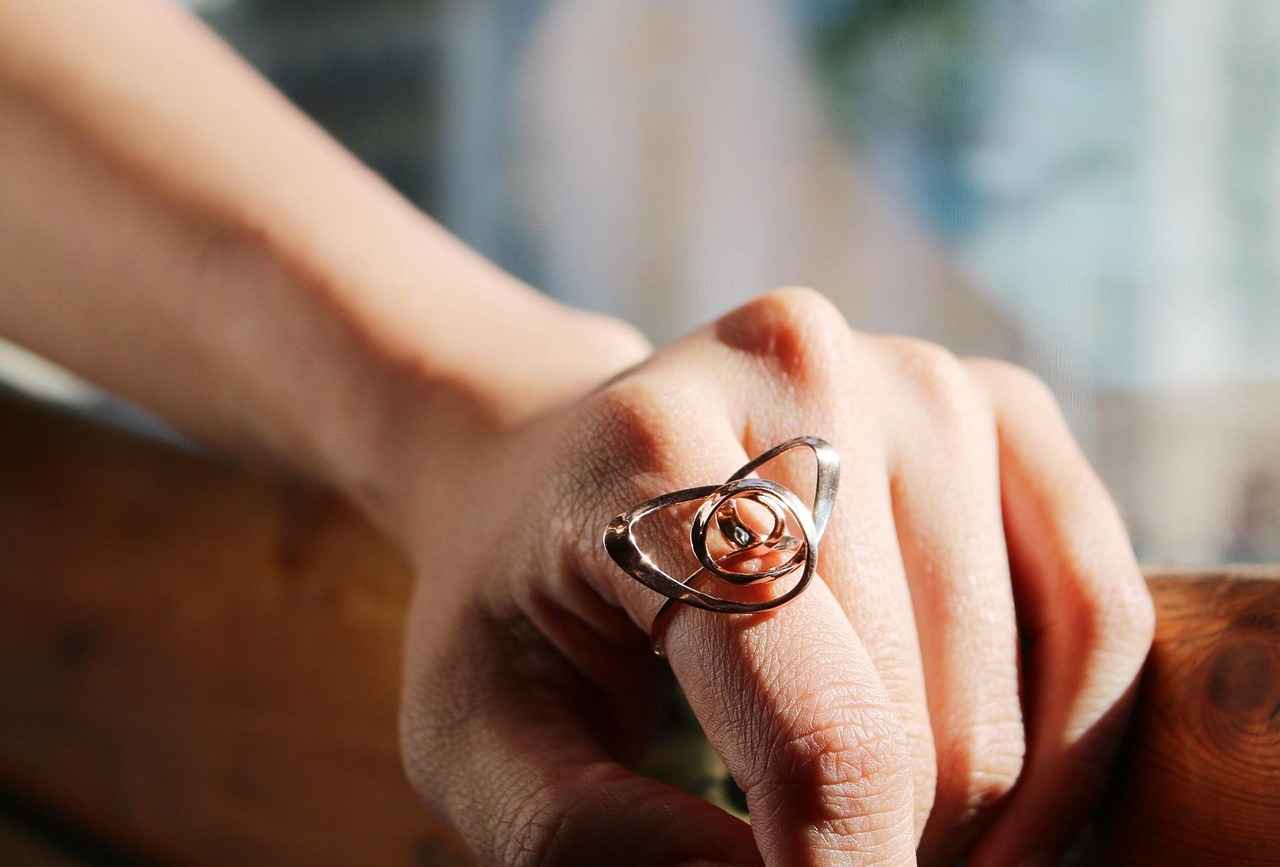
The Future of AI and Jewelry Design
The future of AI in jewelry design is not just bright; it holds the potential to redefine the industry as we know it. As technology continues to advance, the collaboration between artisans and AI is becoming increasingly viable. This section delves into emerging trends, exploring their implications for both creators and consumers.
- Personalization: AI algorithms analyze consumer preferences and trends, allowing for highly personalized jewelry pieces that resonate with individuals.
- Efficiency: The integration of AI can significantly speed up the design process, enabling faster production times without sacrificing quality.
- Innovative Materials: AI helps in discovering and testing new materials that can enhance the aesthetic and functional qualities of jewelry.
AI is not merely a tool for replication; it serves as a creative partner for artisans. By utilizing generative design techniques, AI can propose unique shapes and forms that might not have been conceived by human minds alone. This collaboration fosters a new era of creativity, where technology and traditional craftsmanship coexist.
One of the primary advantages of AI in jewelry design is its ability to process vast amounts of data. This capability allows designers to:
- Analyze Trends: AI can quickly assess market trends, helping designers stay ahead of consumer demands.
- Reduce Waste: By optimizing designs for material usage, AI contributes to more sustainable production practices.
- Enhance Collaboration: AI tools facilitate communication between designers and consumers, leading to more collaborative design processes.
While AI brings numerous advantages, it raises an important question: can it truly replace the human touch in jewelry making? The answer lies in the unique qualities that human artisans bring to their craft, including emotional depth and cultural significance. AI may excel in efficiency and precision, but it often lacks the ability to convey the nuances of human experience.
As AI technology continues to evolve, ethical considerations surrounding originality and ownership become increasingly relevant. Questions arise about who owns the designs created by AI and how intellectual property laws will adapt to include these new forms of creativity. It is essential for the industry to establish clear guidelines to protect both artisans and technologists.
The collaboration between AI and artisans is set to redefine the jewelry landscape. As technology continues to advance, we can expect:
- Hybrid Designs: The fusion of AI-generated designs with handcrafted elements will create unique pieces that reflect both technology and tradition.
- Expanded Market Reach: AI tools can help small artisans reach a broader audience, allowing for diverse voices in the jewelry market.
- Innovative Retail Experiences: AI can enhance the shopping experience through virtual try-ons and personalized recommendations, making the jewelry buying process more engaging.
In conclusion, the future of AI in jewelry design is not about replacing artisans but rather enhancing their capabilities. By embracing technology, the jewelry industry can look forward to a future filled with innovation, creativity, and collaboration.
Collaborative Design Processes
In the rapidly evolving landscape of design, are gaining traction as a means to blend the precision of artificial intelligence (AI) with the innate creativity of human designers. This innovative synergy is not only transforming how products, including jewelry, are conceived but also pushing the boundaries of traditional craftsmanship. In this section, we will explore how this collaboration can lead to groundbreaking designs that resonate with consumers.
Collaborative design processes involve the integration of AI tools with human creativity, allowing designers to leverage data-driven insights while infusing their unique artistic vision. By utilizing AI algorithms, designers can analyze market trends, consumer preferences, and even historical styles, resulting in designs that are not only aesthetically pleasing but also highly relevant.
AI enhances creative collaboration by providing designers with a powerful toolkit. For instance, generative design algorithms can produce a multitude of design variations based on specified parameters. This allows human designers to explore options they may not have considered, ultimately leading to more innovative outcomes. The ability to quickly iterate on designs means that artists can focus on refining their vision rather than getting bogged down in the initial stages of creation.
- Increased Efficiency: AI can handle repetitive tasks, freeing up time for designers to focus on more complex and creative aspects of their work.
- Enhanced Customization: With AI’s ability to analyze consumer data, designers can create personalized pieces that cater to individual tastes.
- Innovation and Experimentation: The partnership allows for experimentation with new materials and styles, pushing the boundaries of traditional design.
Despite the numerous advantages, there are challenges that arise when merging AI with human creativity. One significant concern is the potential for over-reliance on technology, which could stifle the intuitive aspects of design. Additionally, the emotional depth and cultural significance that human artisans bring to their work can sometimes be lost in algorithm-driven processes.
Several forward-thinking brands are already reaping the benefits of collaborative design processes. For instance, a renowned jewelry company has implemented AI-driven tools to analyze trends and generate initial design concepts. These concepts are then refined by skilled artisans, resulting in pieces that are both innovative and deeply personal.
The future of design is bright as the collaboration between AI and human creativity continues to evolve. Emerging technologies, such as augmented reality (AR) and virtual reality (VR), are expected to play a significant role in this space, offering designers new ways to visualize and interact with their creations. Furthermore, as AI becomes more sophisticated, its ability to understand and replicate human emotions may improve, allowing for even deeper collaboration.
In conclusion, the integration of AI technology with human creativity is not merely a trend but a transformative movement in the design world. By embracing collaborative design processes, designers can harness the strengths of both AI and human artistry, leading to innovative and meaningful creations that appeal to a modern audience.
Ethical Considerations in AI Jewelry
As the jewelry industry embraces the advancements in artificial intelligence (AI), it brings forth a myriad of ethical considerations that must be addressed. This section delves into the implications of AI on intellectual property, originality, and ownership, particularly in the context of jewelry design.
The integration of AI in jewelry design raises critical questions about originality and intellectual property rights. As algorithms create unique designs, the question arises: who owns these creations? Is it the designer who programmed the AI, the company that deployed it, or the AI itself? This ambiguity can lead to potential conflicts over copyright and ownership.
When an AI system generates a new jewelry design, it often does so by analyzing existing designs and trends. This process can blur the lines of originality. If a design closely resembles a pre-existing piece, can it still be considered original? The legal frameworks surrounding intellectual property are often not equipped to handle such scenarios, leading to confusion and potential disputes.
The rise of AI-designed jewelry could undermine traditional craftsmanship, as the allure of machine-generated designs may overshadow the unique qualities of handcrafted pieces. Artisans often infuse their creations with personal stories and cultural significance, aspects that AI cannot replicate. This raises ethical questions about the value of human artistry versus machine efficiency.
As consumers become more aware of AI’s role in jewelry design, their perception of authenticity and value may shift. Ethical marketing practices will be essential to ensure transparency about the use of AI in the design process. Brands must communicate clearly whether a piece is entirely AI-generated, a collaboration between AI and a human designer, or solely handcrafted.
AI technology can also contribute to more sustainable practices in the jewelry industry. By using algorithms to optimize material usage and minimize waste, AI can promote environmentally friendly production methods. However, it is crucial to ensure that these technological advancements do not come at the expense of ethical labor practices. The potential for automation to displace human workers must be addressed to avoid exacerbating social inequalities.
Looking ahead, the jewelry industry must find a balance between embracing AI technology and upholding ethical standards. Collaborative efforts between technologists, artisans, and legal experts can help establish frameworks that protect intellectual property while fostering creativity and innovation. As AI continues to evolve, ongoing dialogue will be essential to navigate the complex landscape of ethics in jewelry design.
In conclusion, the intersection of AI and jewelry design presents both opportunities and challenges. By addressing the ethical implications of originality and ownership, the industry can pave the way for a future where technology and craftsmanship coexist harmoniously.
Frequently Asked Questions
- What is AI-designed jewelry?
AI-designed jewelry refers to pieces created using algorithms and machine learning. This technology allows for innovative designs that push the boundaries of traditional craftsmanship, resulting in unique and modern jewelry pieces.
- Can AI truly replace human artisans in jewelry making?
While AI can produce intricate designs with efficiency and precision, it lacks the emotional depth and cultural significance that human artisans bring to their work. Thus, AI is more likely to complement rather than completely replace traditional craftsmanship.
- How does AI influence jewelry design?
AI influences jewelry design through generative algorithms that analyze trends and consumer preferences. This capability allows designers to create personalized options, enhancing customer satisfaction while also exploring new creative avenues.
- What are the limitations of AI in jewelry design?
Despite its capabilities, AI struggles with emotional expression and the cultural nuances that human artists inherently understand. These limitations highlight the unique qualities of handcrafted jewelry that technology cannot replicate.
- What is the future of AI in the jewelry industry?
The future looks bright, with potential for collaboration between AI technology and human creativity. This synergy can lead to innovative designs and ethical considerations surrounding originality and ownership in the jewelry sector.

